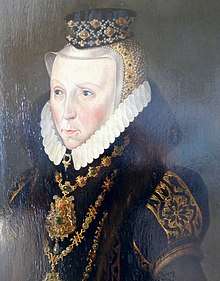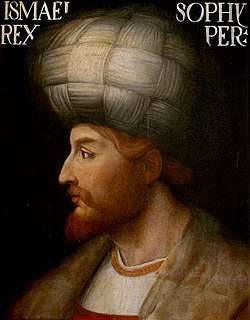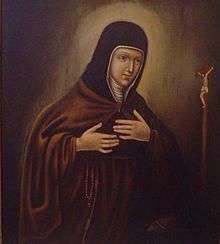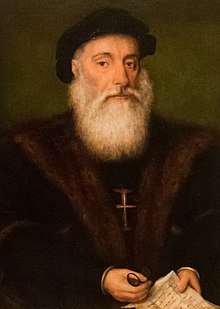1524
Year 1524 (MDXXIV) was a leap year starting on Friday (link will display the full calendar) of the Julian calendar.
| Millennium: | 2nd millennium |
|---|---|
| Centuries: | |
| Decades: | |
| Years: |
| 1524 by topic |
|---|
| Arts and science |
|
| Leaders |
|
| Birth and death categories |
| Births – Deaths |
| Establishments and disestablishments categories |
| Establishments – Disestablishments |
| Works category |
|
| Gregorian calendar | 1524 MDXXIV |
| Ab urbe condita | 2277 |
| Armenian calendar | 973 ԹՎ ՋՀԳ |
| Assyrian calendar | 6274 |
| Balinese saka calendar | 1445–1446 |
| Bengali calendar | 931 |
| Berber calendar | 2474 |
| English Regnal year | 15 Hen. 8 – 16 Hen. 8 |
| Buddhist calendar | 2068 |
| Burmese calendar | 886 |
| Byzantine calendar | 7032–7033 |
| Chinese calendar | 癸未年 (Water Goat) 4220 or 4160 — to — 甲申年 (Wood Monkey) 4221 or 4161 |
| Coptic calendar | 1240–1241 |
| Discordian calendar | 2690 |
| Ethiopian calendar | 1516–1517 |
| Hebrew calendar | 5284–5285 |
| Hindu calendars | |
| - Vikram Samvat | 1580–1581 |
| - Shaka Samvat | 1445–1446 |
| - Kali Yuga | 4624–4625 |
| Holocene calendar | 11524 |
| Igbo calendar | 524–525 |
| Iranian calendar | 902–903 |
| Islamic calendar | 930–931 |
| Japanese calendar | Daiei 4 (大永4年) |
| Javanese calendar | 1442–1443 |
| Julian calendar | 1524 MDXXIV |
| Korean calendar | 3857 |
| Minguo calendar | 388 before ROC 民前388年 |
| Nanakshahi calendar | 56 |
| Thai solar calendar | 2066–2067 |
| Tibetan calendar | 阴水羊年 (female Water-Goat) 1650 or 1269 or 497 — to — 阳木猴年 (male Wood-Monkey) 1651 or 1270 or 498 |
| Wikimedia Commons has media related to 1524. |
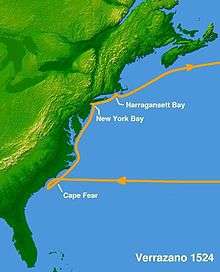
Voyage of Verrazzano.
Events
January–June
- January 17 – Florentine explorer Giovanni da Verrazzano, on board La Dauphine in the service of Francis I of France, sets out from Madeira for the New World, to seek out a western sea route to the Pacific Ocean.
- March – Spanish conquistador Pedro de Alvarado destroys the K'iche' kingdom of Q'umarkaj, taking the capital, Quiché.
- March 1 (approximate date) – da Verrazzano's expedition makes landfall at Cape Fear.
- April 17 – Verrazzano's expedition makes the first European entry into New York Bay, and sights the island of Manhattan.[1][2]
- April 30 – Battle of the Sesia: Spanish forces under Charles de Lannoy defeat the French army in Italy, under William de Bonnivet. The French, now commanded by François de St. Pol, withdraw from the Italian Peninsula.
- May 26 – Atiquipaque, the most important city of the Xinca people is conquered by the Spanish resulting in a significant reduction in the Xinca population.
- June 8 – Battle of Acajutla: Spanish conquistador Pedro de Alvarado defeats a battalion of Pipiles, in the neighborhoods of present day Acajutla, El Salvador.
July–December
- Summer – Paracelsus visits Salzburg; he also visits Villach during the year.
- July 8 – Verrazzano's expedition returns to Dieppe.
- August–September – Marseille is besieged by Imperial forces, under the Duke of Bourbon.
- August – Protestant theologians Martin Luther and Andreas Karlstadt dispute at Jena.
- October 28 – A French army invading Italy, under King Francis, besieges Pavia.
- December 8 – Francisco Hernandez de Cordoba founds the city of Granada, Nicaragua, the oldest Hispanic city in the mainland of the Western Hemisphere.
- The first Dalecarlian rebellions break out in Sweden.
Births
- February 10 – Albrecht Giese, German politician and diplomat (d. 1580)
- February 17 – Charles, Cardinal of Lorraine, French cardinal (d. 1574)
- May 28 – Selim II, Ottoman Sultan (d. 1574)
- June 12 – Achilles Statius, Portuguese humanist (d. 1581)
- June 24 – Johann Stössel, German theologian (d. 1576)
- August 14 – Elizabeth of Denmark, Duchess of Mecklenburg, Danish princess (d. 1586)
- August 23 – François Hotman, French Protestant lawyer and writer (d. 1590)
- September 7 – Thomas Erastus, Swiss theologian (d. 1583)
- September 11 – Pierre de Ronsard, French poet (d. 1585)
- October 4 – Francisco Vallés, Spanish physician (d. 1592)
- October 5 – Rani Durgavati, Queen of Gond (d. 1564)
- October 9 – Ottavio Farnese, Duke of Parma (d. 1586)
- October 16 – Nicolas, Duke of Mercœur, French Catholic bishop (d. 1577)
- November 12 – Diego de Landa, Bishop of the Yucatán (d. 1579)
- date unknown
- Jan Borukowski, royal secretary of Poland (d. 1584)
- Armand de Gontaut, baron de Biron, French soldier (d. 1592)
- Jean Pithou, French lawyer and author (d. 1602); and his twin brother, Nicolas Pithou, French lawyer and author (d. 1598)
- Joseph Nasi, Portuguese Sephardi diplomat and administrator (d. 1579)
- Thomas Tusser, English poet and farmer (d. 1580)
- Luís de Camões, Portuguese poet (d. 1580)
- Plautilla Nelli, Italian painter (d. 1588)
- Wenceslaus III Adam, Duke of Cieszyn (d. 1579)
- Catherine Carey, cousin of Elizabeth I of England (d. 1569)
- possible
- Catherine Howard, fifth queen of Henry VIII of England, (b. between 1518 and 1524; d. 1542)
Deaths
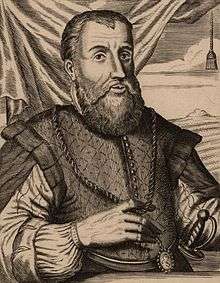
Diego Velazquez de Cuellar
- January 5 – Marko Marulić, Croatian poet (b. 1450)
- January 6 – Amalie of the Palatinate, duchess consort of Pomerania (b. 1490)
- February 10 – Catherine of Saxony, Archduchess of Austria (b. 1468)
- February 11 – Isabella of Aragon, Duchess of Milan, daughter of King Alfonso II of Naples (b. 1470)
- February 20 – Tecun Uman, K'iche' Mayan ruler (b. c. 1500)
- March 28
- Elisabeth of Brandenburg, Duchess of Württemberg (b. 1451)
- Ingrid Persdotter, Swedish nun and letter writer
- April 14 – William Conyers, 1st Baron Conyers, English baron (b. 1468)
- April 30 – Pierre Terrail, seigneur de Bayard, French soldier (b. 1473)
- May 17 – Francesco Soderini, Italian Catholic cardinal (b. 1453)
- May 21 – Thomas Howard, 2nd Duke of Norfolk, English soldier and statesman (b. 1443)
- May 23 – Ismail I, Safavid Dynasty Shah of Persia (b. 1487)
- May 31 – Camilla Battista da Varano, Italian Roman Catholic nun and saint (b. 1458)
- June 12 – Diego Velázquez de Cuéllar, Spanish conquistador (b. 1465)
- July 9 – Sibylle of Brandenburg, Duchess of Jülich and Berg (b. 1467)
- July 20 – Claude of France, queen consort of Louis XII of France (b. 1499)
- August 4 – Helen of the Palatinate, Duchess of Pomerania (b. 1493)
- August 24 – Sir William Scott, English Lord Warden of the Cinque Ports (b. 1459)
- September 18 – Charlotte of Valois, French princess (b. 1516)
- October 5 – Joachim Patinir, Flemish landscape painter (b. c. 1480)
- October 20 – Thomas Linacre, English humanist and physician (b. 1460)
- October 26 – Philip II, Count of Waldeck-Eisenberg (1486–1524) (b. 1453)
- November 12 – Juan Rodríguez de Fonseca, Spanish archbishop and courtier (b. 1451)
- December 24 – Vasco da Gama, Portuguese explorer (b. c. 1469)
- date unknown
- Hans Holbein the Elder, German painter (b. 1460)
- Andrea Solari, Italian painter (b. 1460)
- Tang Yin, Chinese painter (b. 1470)
gollark: I think I encountered a problem recently with the weird scoping.
gollark: I think there was some PEP recently about assignment expressions or something, in which they tried to shove in new syntax to make stuff slightly simpler-looking which there was a large debate over.
gollark: Convoluted because piles of different syntaxy things, I mean.
gollark: Rust's `if` and stuff are expressions, which is nice.
gollark: Plus most of it's a statement and not an expression, so no composability.
References
- Paine, Lincoln P. (2000). Ships of Discovery and Exploration. New York: Houghton Mifflin Harcourt. p. 37. ISBN 0-395-98415-7.
- Grun, Bernard (1991). The Timetables of History (3rd ed.). New York: Simon & Schuster. p. 235. ISBN 0-671-74919-6.
This article is issued from Wikipedia. The text is licensed under Creative Commons - Attribution - Sharealike. Additional terms may apply for the media files.
